My Client Wants Another Revision?! (And How I Survived)
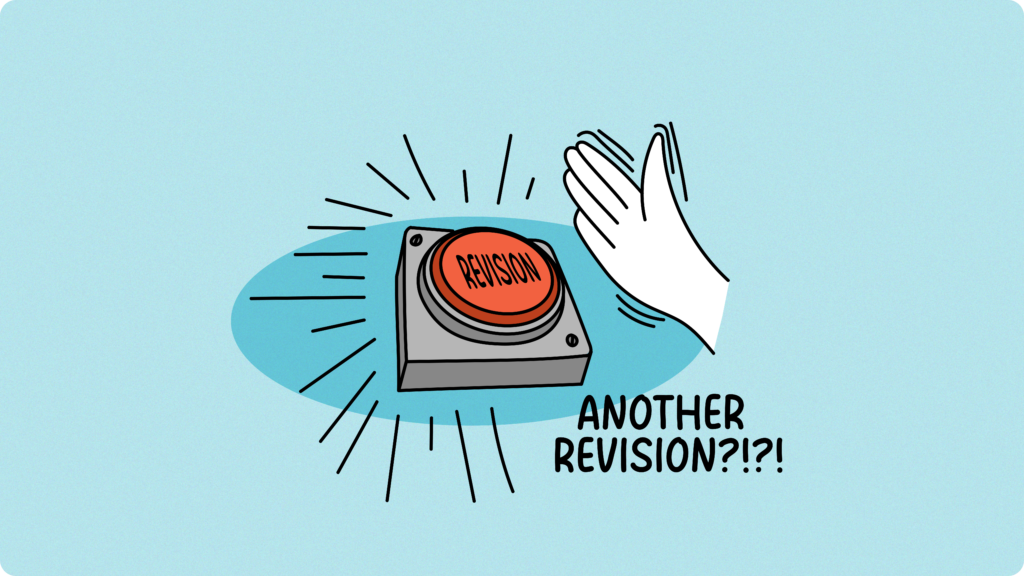
Ugh, revisions. We’ve all been there. You nail the brief—a sleek new logo, a killer website mockup, a brochure that’s chef’s kiss—and then… the client comes back with a laundry list of “minor” tweaks. “Can we just make the logo a little bigger? And maybe try a different shade of blue? Oh, and could we see what it looks like with a completely different font?” It’s the dreaded revision cycle that never ends, especially when a client acts like “unlimited revisions” is in the contract, even if it totally isn’t. As graphic designers, we get it. You want happy clients. You want them to rave about your work. But endless revisions are a profit-killer, a creativity-drainer, and a direct path to burnout. It’s like being trapped in a never-ending PSD file of doom. So, how do you deal with clients who seem to think “just one more tweak” is their God-given right? How do you set boundaries without sounding like a jerk? And, most importantly, how do you get paid for the extra work you’re doing? Let’s break it down. Why Unlimited Revisions Are a Disaster “Unlimited” anything is a bad idea, especially in design. Here’s why: Why Clients Think They’re Entitled to Unlimited Revisions Now that we understand why unlimited revisions are problematic, let’s explore why clients may expect them. Setting Boundaries and Charging for Extra Iterations Here’s how to take back control of your time and creativity: Any requests for additional meetings or design rounds, exceeding what is defined in this contract, may necessitate a modification to the estimated price and timeline of this project. This clause sets the stage for fair boundaries. Combine it with these specific points: Detailed Proposals: Before finalizing the contract, your proposal should clearly define the project scope, deliverables, milestones, timeline, and revision policy. This helps set client expectations upfront and avoids misunderstandings later. Here’s a sample: This clear structure helps clients see where revisions fit in and keeps the project on track. “Just a friendly reminder, this revision goes beyond what was included in the original agreement. I’d be happy to proceed at my hourly rate of $50/hour. Would you like me to send over an updated estimate?” Expand the use of time-tracking tools like Toggl or Clockify to monitor all revisions, even the included ones. These tools not only help justify your fees but also refine your pricing for future projects by providing clear data on how long each revision takes. Stop letting endless revisions drain your creativity and earnings. By setting clear boundaries, using structured feedback rounds, and leveraging time-tracking tools, you can stay in control while delivering top-notch designs. You’ve got this!
How to Price Your Rates as a Freelancer (Even With Inflation!)

Hey freelancers! Figuring out your rates can be a bit of a hassle, especially with prices for everything—from coffee to gas—on the rise. Whether you’re new to freelancing, juggling side gigs, or working full-time, nailing your pricing strategy is essential to building a thriving career. Let’s break it down into simple steps so you can keep up with inflation and get paid what you’re worth. 1. Know Your Worth and Your Costs First off, you’ve got to figure out what your work is worth. Here’s how to get started: Once you have a clear picture of your costs and the market, you can set a base rate that covers your expenses and reflects your value. Don’t undersell yourself—your time and skills are worth it! 2. Price for Profit Covering your costs is just the start. Build in a profit margin to account for expenses like software, ads, and taxes. For instance, if your base rate is $20/hour to cover costs, adding a 20% profit margin would bring it to $24/hour. This extra margin allows you to invest in your business or save for slow periods. As you gain experience and improve your skills, don’t be afraid to increase your profit margin to reflect the added value you bring. 3. Add an Inflation Buffer Inflation reduces the value of money, so it’s crucial to adjust your rates to keep up with rising costs. For example, if the prices of essential tools like software subscriptions or supplies increase, your earnings might not cover your expenses unless you adjust. Keeping your rates updated helps you stay on top of rising costs. Here’s how: Inflation impacts your earnings. For example, if your rate is $20/hour and inflation is 3%, increasing your rate to $20.60/hour keeps your purchasing power intact. Reviewing your rates annually ensures you stay ahead of rising costs. 4. Communicate Changes Clearly If you’re raising your rates for existing clients, explain your unique contributions clearly. For instance, graphic designers can show how their work boosts sales or strengthens branding, while content writers might highlight metrics like higher engagement or increased traffic. Demonstrating tangible results justifies your rate increase and reinforces your value. Let clients know in advance. Here’s an example of what you could say: Hi [Client Name], I’ve loved working with you on [Project/Service]! Over the past [time period], my work has helped deliver [specific achievement, e.g., 20% more followers, better engagement rates, or improved results]. To continue providing this level of quality and support, I’m updating my rates to reflect current market conditions. Starting [Date], my new rate will be [$XX]. Thank you for your understanding and support! Most clients will appreciate your transparency and professionalism. 5. Offer Packages or Retainers Inflation can make one-off projects feel unpredictable, but offering packages or retainers can create stability for both you and your clients. For example: These options make your pricing more appealing while ensuring consistent income. Setting your freelance rates doesn’t have to be intimidating, even with inflation making things tricky. By understanding your costs, building in a profit margin, and communicating your value effectively, you’ll stay ahead of the game and thrive as a freelancer. How do you plan to update your rates? Start today and take control of your freelance career. Your hard work and skills deserve to shine!
What Is Adjusted Gross Income (AGI) and why should freelancers care?
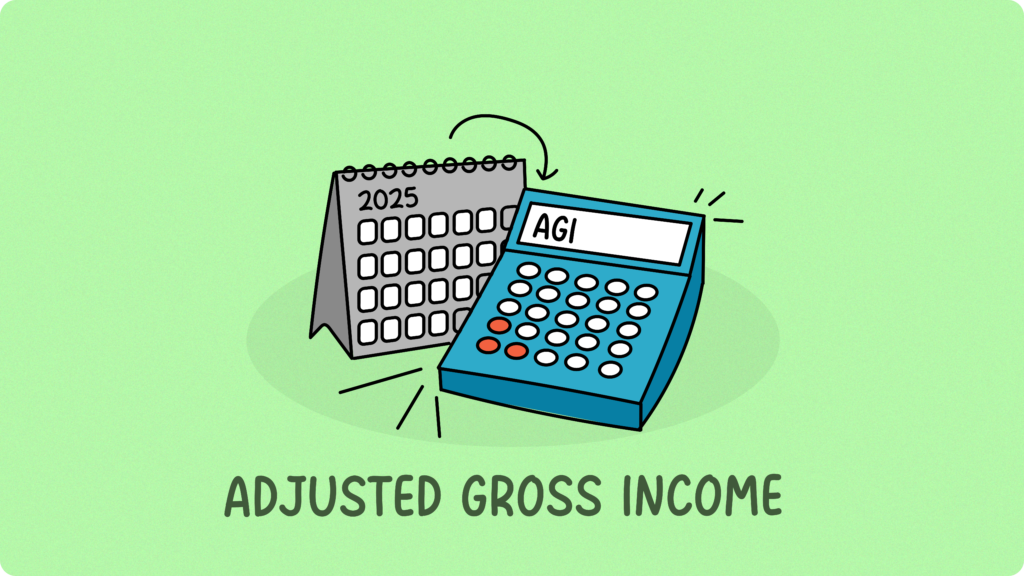
If you’re a brand-new freelancer just stepping into the world of taxes, you’ve probably come across the phrase “Adjusted Gross Income” (AGI) at some point. Don’t worry if it sounds intimidating—AGI is simply a fancy term that helps the IRS figure out how much of your income is actually taxable. Think of it like peeling layers off an onion until you get to the core number that truly matters for your taxes. So, what is AGI exactly? Your AGI is basically your total income for the year minus some specific deductions. Start with the money you made from all your work—whether that’s freelance writing gigs, design projects, or coding contracts—plus any other income sources like interest earned from a business savings account. That gives you your gross income. From there, you subtract certain qualified expenses (we’ll go over some common ones in a second). The number you’re left with after subtracting these allowed deductions is your Adjusted Gross Income. Why does AGI matter? Your AGI is a starting point for figuring out how much tax you owe. The IRS uses your AGI to figure out if you qualify for certain tax credits, deductions, or other breaks. In short, it’s the number that tells the IRS, “This is how much I really earned after the most basic deductions.” The lower your AGI, generally speaking, the less tax you’ll pay. Common deductions that affect Your AGI As a freelancer, you get to subtract some pretty useful stuff to lower your AGI. Here are a few common ones: Keep in mind, there are specific IRS rules for these deductions, and not everyone qualifies. But if you do, they’re a handy way to trim down that number and potentially save some money. How to Find Your AGI If you use a tax software or pay a professional, they’ll automatically crunch the numbers for you. But here’s the basic formula: Gross Income – Above-the-Line Deductions = Adjusted Gross Income (AGI) Here’s an example to show you how it all comes together: Item Amount Freelance Income $60,000 Self-Employment Tax $9,000 Self-Employment Deduction -$4,500 (50% from self-employment tax) IRA Contribution -$3,000 HSA Contribution -$2,000 Adjusted Gross Income $50,500 Wrapping it up For many new freelancers, taxes feel like a giant, tangled mess of complicated terms. But understanding key concepts like AGI can make the whole process feel a lot less scary. Keep in mind that your AGI serves as a building block for figuring out your overall tax situation. The more you understand it, the more control you’ll have over how much you pay—or don’t pay—at tax time. As you get comfortable with these basics, you’ll find that tax season isn’t as overwhelming as it first appears. And remember, if you’re ever unsure, talking to a tax professional or using trusted tax software can give you the peace of mind you need.
Navigating the Bench Accounting Shutdown: What You Need to Know
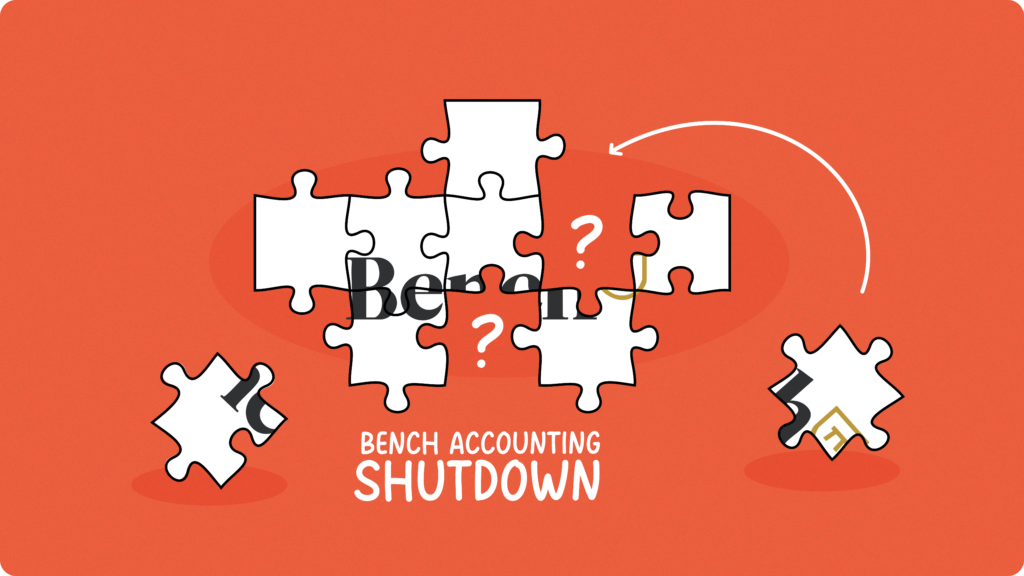
The sudden shutdown of Bench Accounting during the holiday season and its quick acquisition by Employer.com have left thousands of small business owners in a challenging position. For many, this disruption couldn’t have come at a worse time, with year-end financials and tax preparations looming. Business owners are now left scrambling to secure their financial records and evaluate their options. Bench’s sudden closure on December 27th, followed closely by the announcement of its acquisition on December 30th, has only deepened the uncertainty for its clients. Founded 12 years ago, Bench grew to employ over 600 people, served more than 1,100 clients, and raised over $113 million in funding. Despite these achievements, recent reports of declining service quality and internal challenges suggest deeper issues within the company. Declining service quality, forced yearly subscriptions, and the departure of former CEO Ian Crosby over the years point to underlying challenges at Bench. These issues leave small business owners questioning the company’s continuity and reliability. What We Know About Employer.com Employer.com, a relatively new company specializing in payroll services, has stepped in to acquire Bench. However, several factors raise concerns about the future of Bench’s services: Why Bench Clients Are Concerned Many long-time Bench clients have expressed frustration over declining service quality in recent years. Issues such as delayed responses, errors in financial reporting, and limited support for industries like eCommerce have left business owners questioning the value of staying. Additionally, reports of Bench forcing users into yearly subscription models shortly before the shutdown have further eroded trust. For eCommerce businesses in particular, Bench’s inability to accurately track Cost of Goods Sold (COGS) has been a significant pain point. Relying on cash-based accounting with year-end adjustments has made it nearly impossible for these businesses to get an accurate picture of profitability throughout the year. Practical Steps for Bench Clients If you’re a Bench client, here’s what you can do to navigate this transition effectively: Looking Ahead The Bench shutdown and acquisition have created a period of uncertainty for thousands of businesses. While Employer.com has promised continuity, their lack of experience in bookkeeping and the rushed nature of the acquisition leave many unanswered questions. For businesses needing reliable, specialized accounting support—particularly those in eCommerce—this is an opportunity to find a solution that better meets your needs. Stay informed, act quickly to secure your financial records, and explore options that will give you the confidence and stability to move forward.
Social Media Freelancers: TikTok Ban and Preparing for Change
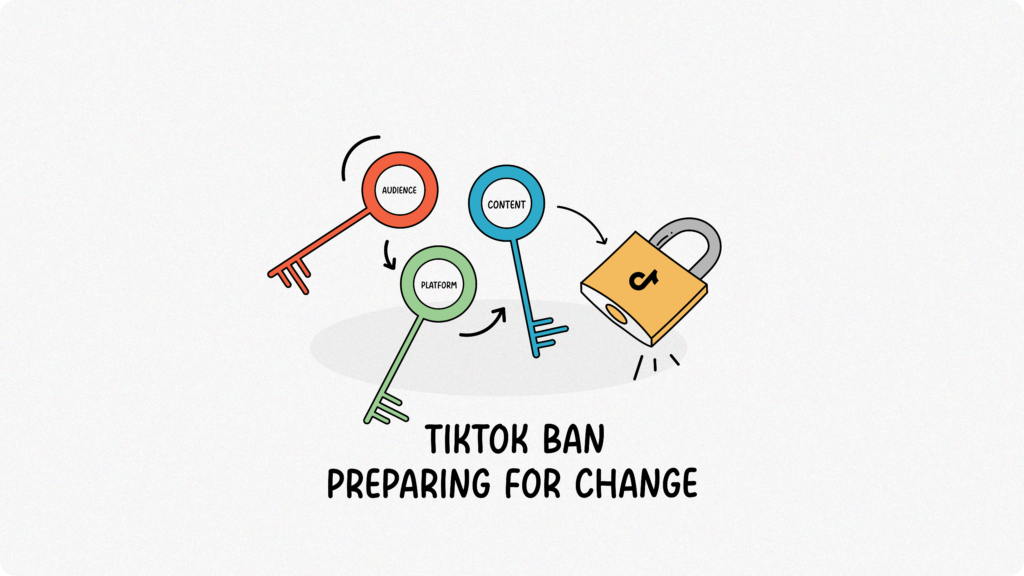
Hey there, social media pros! Whether you’re managing clients’ accounts or building your own brand, you’ve got a lot on your plate. Today, we’re tackling a big challenge: gearing up for a possible TikTok ban in the USA. This is a critical area for anyone relying on social media, so let’s dive in and keep your business thriving. The TikTok Ban: What’s Happening? TikTok’s future in the USA is up in the air, with a potential ban on the horizon. As of January 19, 2024, restrictions could kick in unless agreements are reached on data privacy and national security issues. This has left creators and freelancers scrambling to figure out their next moves. The big question is: What’s your plan if the ban happens? How Users and Creators are Affected and What Could Happen Next If TikTok gets banned, it’s going to shake things up for users and creators alike. Creators who rely on TikTok for income will need to find ways to move their audience to other platforms. At the same time, users will lose their go-to app for short-form videos, opening the door for other platforms to step in. Here’s what you need to think about: There’s also talk of extending the January 19 cutoff date. If negotiations between TikTok and U.S. regulators make progress, the ban could be delayed. An extension would give freelancers and creators more breathing room to adapt, test strategies, and build a presence on new platforms. Here’s how to make the most of it: Expand to Other Social Platforms TikTok is hot right now, but other platforms have plenty to offer too. Start exploring Instagram Reels, YouTube Shorts, Pinterest, or X (formerly Twitter). Each platform has its own vibe, so adjust your content accordingly: Build Your Email List Don’t put all your eggs in the social media basket. Start collecting emails so you can connect with your audience directly, no matter which platforms are in or out. Email gives you total control over your content, letting you share updates, exclusive tips, or behind-the-scenes goodies. Partner Up with Others Team up with other freelancers, agencies, or brands to cross-promote and widen your reach. These partnerships can keep you visible, even if TikTok goes away. Bringing It All Together Social media freelancers, change is the name of the game. Whether it’s prepping for a TikTok ban or navigating possible extensions, staying flexible and proactive is the key to success. Diversify your platforms, strengthen your audience relationships, and keep creating awesome content. You’ve got this!
Self-Employed? Here’s How to Handle Taxes Like a Pro
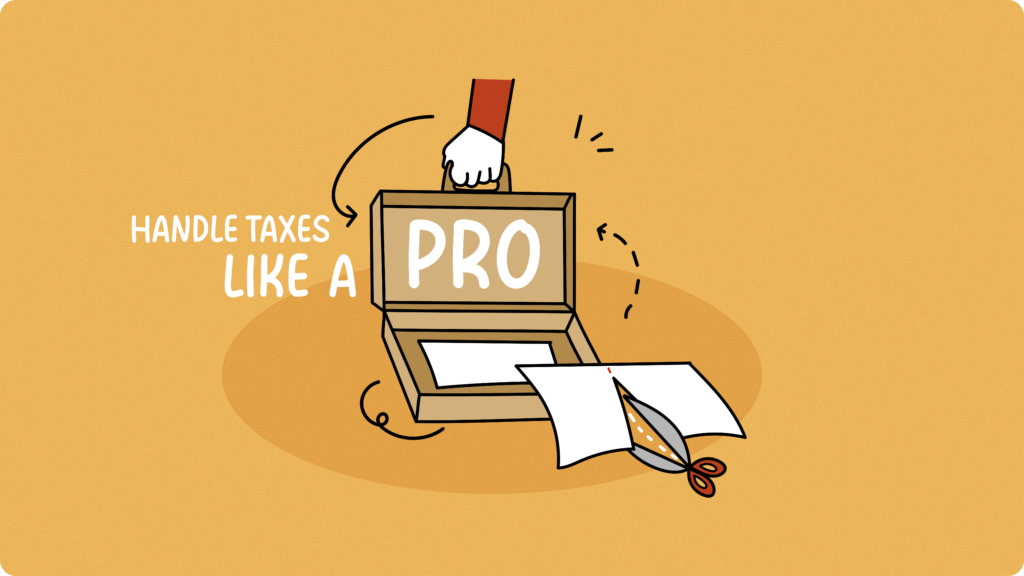
So, you’ve joined the self-employment squad—congrats! Being your own boss is awesome, but let’s talk about the not-so-fun part: taxes. Managing your self-employed taxes doesn’t have to be a headache, though. Here’s the lowdown to help you save money, stay organized, and avoid any awkward IRS letters. What’s the Deal with Self-Employment Taxes? Here’s the kicker: when you’re self-employed, you pay more taxes. Why? Because you’re both the employee and the boss. That means you’re covering the full 15.3% Social Security and Medicare taxes. Ouch, right? Unlike regular employees, you don’t get taxes taken out of your paycheck—you’ve got to handle it yourself. Oh, and the IRS expects you to pay quarterly, not just at tax time. Quarterly Taxes: Love Them or Hate Them, They’re Mandatory Quarterly taxes are your “pay-as-you-go” system. Four times a year, you send Uncle Sam an estimate of how much you owe. Skip them, and you could face penalties. Pro Tip: Use a budgeting app or a spreadsheet to keep tabs on your income and estimate what you’ll owe. Better safe than sorry! Freelancer Tax Hacks You Need to Know Keep more of your hard-earned cash with these deductions: To check out more about which items can be tax-deducted, head over to our blog detailing everything you need to know! Tax Nightmares to Dodge Help! I Missed My Quarterly Payments! Uh-oh. If you didn’t pay enough, the IRS might hit you with penalties. Sometimes they’ll let you set up a payment plan, but why risk it? Stay ahead of the game, and you’ll sleep way better. Budget Like a Boss Monthly money check-ins = no surprises. Get yourself some accounting software, or at least a spreadsheet, and track those dollars. Bonus points if you save your receipts digitally (hello, organized life!). Stay on top of your taxes, and focus on what truly matters—growing your business. Do You Need a Tax Pro? If your taxes are pretty simple, doing them yourself might be just fine. But U.S. tax rules can get confusing fast. There’s that strict $25 gift limit, entertainment deductions, and tons of tiny details you could accidentally miss. Add in the risk of late lings, penalties, or overlooking new updates, and it’s easy to get in over your head. If your budget allows, hiring a pro (like a CPA) can make a huge difference. They’ll help you with the best deductions, keep you on top of the rules, and ensure you never sweat a deadline again. Think of it as an investment that saves you time, keeps more cash in your pocket, and spares you a whole lot of stress. Bringing It Home Taxes don’t have to suck. Stay on top of them, know your deductions, and keep your books tidy. The goal? Less stress, more focus on building that dream biz. Now go crush it—your taxes (and your business) are in good hands.
The Freelancer’s Guide to Tax Deductions: Keep More of Your Cash
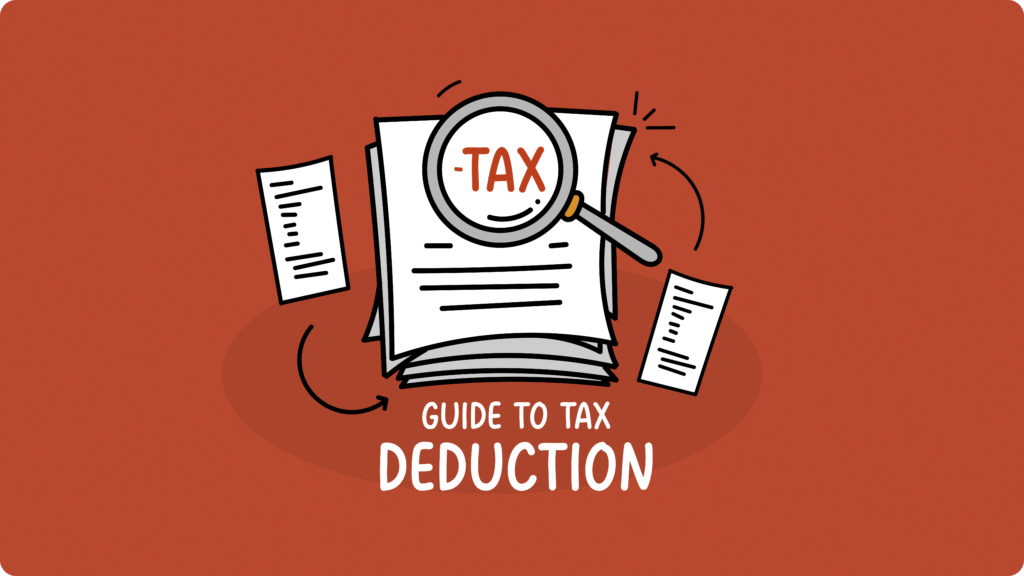
Hey there, freelancer! Tax season doesn’t have to be scary, especially when you know how to use deductions to keep more of your hard-earned money. Here’s a simple official guide to the most common expenses freelancers can claim to lower their tax bill. We’ll also clarify if everyday items like meals, cable TV subscriptions, or books can be claimed. Let’s dive in! 1. Home Office Space Got a dedicated spot at home where you work your magic? Whether it’s a full room or just a cozy corner, you can deduct a portion of your rent or mortgage, utilities, and even internet costs. Use the simplified method to claim $5 per square foot, up to 300 square feet. It’s easy and avoids complicated calculations. Just make sure it’s used exclusively for work—no Netflix binging allowed! IRS Rule: To qualify for this deduction, your home office must be your principal place of business, and the area must be used regularly and exclusively for work. 2. Tools of the Trade Need a laptop, software, fancy camera, or even a printer for your work? These are deductible! Even smaller items like notebooks, pens, or that ergonomic chair count too. Basically, if you’re using it for work, it’s probably deductible. Keep receipts for everything—even for that mouse pad with the wrist support. IRS Rule: Equipment and tools used for business can often be fully deductible in the year of purchase under Section 179, or depreciated over time if the cost is significant. 3. Business Travel and Mileage Driving to a client meeting or picking up supplies? Track your mileage. You can deduct the cost of work-related travel, whether it’s by car, plane, train, or even bike. Hotels and meals during business trips? Those count too! Use an app to track your miles—it’ll save you a ton of time and hassle. IRS Rule: The standard mileage rate for 2023 is 65.5 cents per mile. Keep a detailed log of your business-related travel, including dates, mileage, and purpose. 4. Health Insurance Premiums Freelancers pay for their own health insurance, and guess what? You can deduct those premiums, up to 100% of the cost if you’re self-employed and not covered by any other plan. This deduction can be a huge help when you’re juggling all the other costs of being self-employed. Just be aware that this deduction applies to health, dental, and long-term care premiums for yourself, your spouse, and dependents. IRS Rule: This deduction is claimed on Form 1040, Schedule 1, and cannot exceed your net self-employment income. 5. Marketing and Advertising Spent money on promoting your services? Ads, social media boosts, website hosting, and even business cards can all be deducted. If it helps you land clients, it’s fair game. IRS Rule: Any expense directly tied to promoting or advertising your business is deductible under ordinary and necessary expenses. 6. Professional Services Got an accountant or lawyer helping you out? Their fees are deductible. Paying for a coworking space? Deduct that too. These are essential costs of running your business. Keep contracts or invoices as proof of these expenses. IRS Rule: Professional fees for services that are ordinary and necessary for your business operations are deductible. 7. Education and Training Sharpening your skills with an online course, workshop, or certification? Deduct those fees! Books and training materials count too. Just make sure the education is directly related to your freelancing work. For example, a pottery class for a graphic designer? Probably not. A Photoshop course? Absolutely! IRS Rule: Education expenses must maintain or improve skills required in your business or be required by law to maintain your professional status. They cannot qualify you for a new trade or business. 8. What You Can’t Deduct Not everything counts as a business expense. Here are some common items that usually can’t be deducted: Always ask yourself: “Is this expense directly related to my work?” If the answer is no, it’s likely not deductible. TL;DR Quick Reference Table Deductible Non-deductible Home office space Personal home décor Business equipment & tools (laptop, software) Personal electronics (gaming consoles) Work-related travel & mileage Personal leisure travel Health insurance premiums Personal gym memberships Marketing & advertising (ads, business cards) Cable TV subscription for entertainment Professional fees (accountants, lawyers) Bribes, kickbacks, political contributions Education & training related to your field Hobby classes unrelated to your work (e.g. pottery) Business meals (with clients) Meals for personal enjoyment Books related to skill development Books for leisure Specialized uniforms & safety gear General clothing Gifts up to $25 per recipient Non-deductible amount: Any portion of a business gift exceeding $25 per recipient Final Thoughts Taxes don’t have to be a headache. By keeping track of these common deductions, you’ll not only save money but also feel more in control of your finances. Start tracking your expenses and keeping those receipts handy—every bit counts! For more tips on managing self-employment taxes, check out our blog, Self-Employed? Here’s How to Handle Taxes Like a Pro. (Remember, these are just some common examples—there’s plenty more out there. If you’re not sure about a specific expense or think we’ve missed something, just check out the IRS website or talk to a tax pro for the full scoop.) Happy freelancing!
Choosing the Best Business Structure for Freelancers
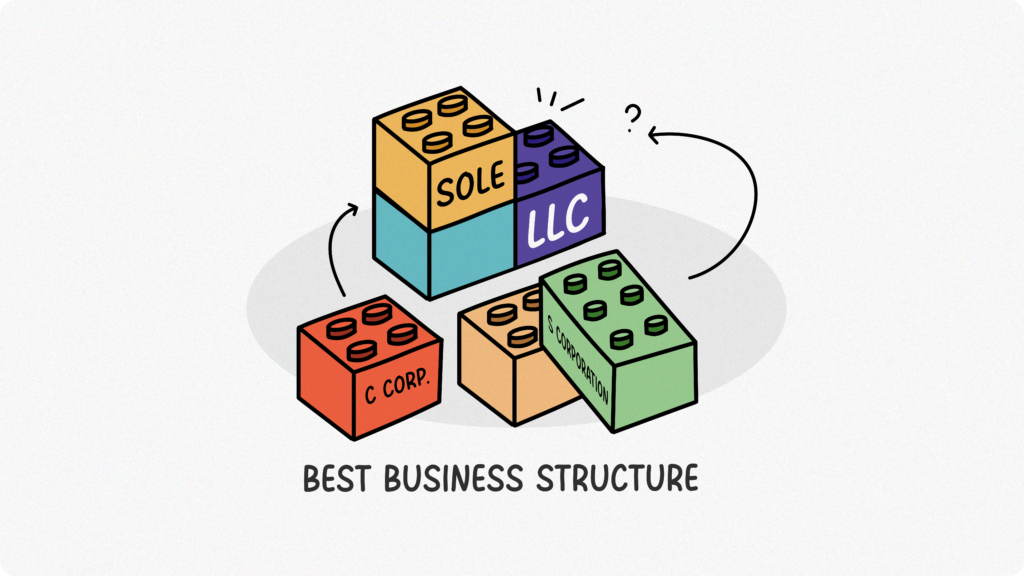
So, you’ve decided to take the plunge and start freelancing? Congrats! Before you dive into projects, let’s talk about the boring (but important) stuff: business structures. Here are the most common structures for freelancers: Business Structure Liability Protection Complexity Pros Cons Sole Proprietorship No Simplest Simple to start and manage Personal liability for debts and lawsuits LLC Yes Moderate Protects personal assets Flexible tax options S Corporation Yes More Complex Tax savings on self-employment taxes Requires more paperwork and compliance C Corporation Yes Most Complex – Strong liability protection – Attracts investors easily – Double taxation: both the corporation and owner pay taxes – Complex setup and ongoing requirements Sole Proprietorship The simplest setup, it’s like being self-employed. You don’t need to register your business with the state, and your business income and expenses are reported on your personal tax return. But remember, there’s no separation between your personal and business finances, so your personal assets could be at risk. Limited Liability Company (LLC) An LLC creates a legal shield between you and your business. This means your personal assets are generally protected from business debts and liabilities. You can choose to be taxed as a sole proprietor or a corporation. S Corporation (S Corp) A more complex structure that can offer tax benefits, especially if you have higher earnings. However, it requires more paperwork and can be more expensive to set up and maintain. C Corporation (C Corp) A traditional corporate structure, often used for larger businesses. It’s more complex and has higher administrative costs, but it can offer additional benefits like raising capital through the sale of stock. Thinking about how to set up your freelance business? Here are some questions to help you decide on the best fit: Are you the sole owner? If you’re running the show solo, a sole proprietorship or single-member LLC is a solid choice to keep things simple. Do you want liability protection? If keeping your personal savings separate from your business risks sounds good, go for an LLC or S Corp. They create a legal shield around your personal assets. Are you expecting high profits? Making big bucks? An S Corp can help lower your tax bill by saving on self-employment taxes. Planning to raise money from investors? If you’re thinking big and need outside funding, a C Corp is often the way to go—it’s built for attracting investors. How to Set Up Your Freelance Business in 5 Easy Steps Final Tips Choosing the right business structure sets the foundation for your freelance success—take the first step and bring your vision to life today!
Cash Flow Projection for Small Businesses

Freelancing comes with its own set of challenges, especially when it comes to managing money. Cash inflows and outflows can feel unpredictable, making planning difficult. Cash flow projections give you control over your finances. They help you prepare for the unexpected, make smart decisions, and ensure your business stays on solid ground. What are Cash Flow and Cash Flow Projection? Cash Flow refers to the money moving in and out of your freelance business. Cash inflows are the payments you get from clients or other income sources. Cash outflows are the money you spend on things like subscriptions, marketing, or travel. A Cash Flow Projection is your money management plan. It predicts your future inflows and outflows, helping you avoid surprises and confidently handle both busy and slow periods. Why Cash Flow Projections Matter Freelancers often deal with irregular income and sudden expenses, but a cash flow projection keeps things under control. Here’s why they’re important: Understanding Your Finances To create a cash flow projection, you first need to understand the basics of your finances: Cash Inflows Cash Outflows This is what you spend to keep your business running. Common examples are: Net Cash Flow Net cash flow is the difference between your inflows and outflows: Net Cash Flow = Cash Inflows – Cash Outflows Positive Net Cash Flow: You’re earning more than you’re spending—great! Negative Net Cash Flow: You’re spending more than you’re earning—time to adjust. Balances Your balance is the amount of cash you have at the start or end of a period: Opening Balance: Cash you start with. Closing Balance: Cash left after accounting for all inflows and outflows. How to Create a Cash Flow Projection Making a projection is simple! Here’s how to do it: Example Projection Table: Tips for Better Projections Why Cash Flow Projections Are Worth It Cash flow projections help you stay on top of your money. They show you how to avoid running out of cash during slow months, handle surprise expenses like taxes or fixing your laptop, and plan for the future. Whether you’re saving for emergencies, buying better tools, or building up your business, cash flow projections make managing your finances simple and less overwhelming. Start Your Projection Today! It only takes a few minutes to create your first projection. It’s simple, effective, and one of the best steps you can take to manage your finances with confidence. Get started today with your free Fynlo account.
Retained Earnings for Freelancers
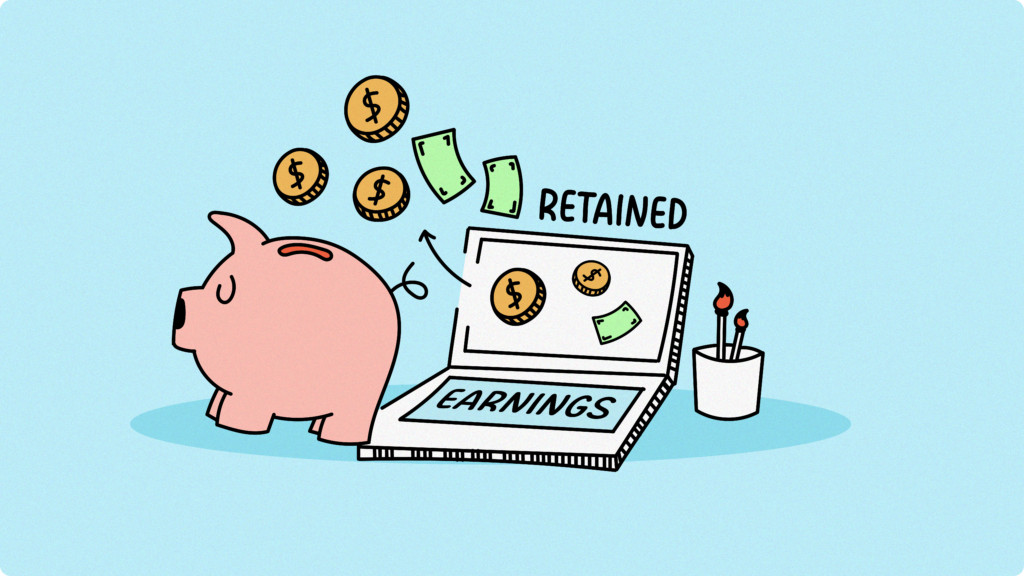
As a freelancer, you juggle more than just projects—you’re also in charge of running a business. Navigating fluctuating income, covering expenses, and planning for growth can feel overwhelming. That’s where retained earnings come into play. In simple terms, retained earnings are the portion of your income that stays in your business after paying expenses and taking what you need for personal use. Think of it as your business’s savings account—a safety net and a springboard for growth. For freelancers, retained earnings are more than just a financial term; they’re a lifeline. They help you weather slow months, invest in your craft, and prepare for opportunities that come your way. By mastering retained earnings, you lay the foundation for a freelance business that’s resilient and poised for long-term success. This article explains the role of retained earnings, offers tips for tracking them, shares strategies for financial stability, and covers key tax considerations. With the right steps, freelancers can build a strong, sustainable business. Why are Retained Earnings important for freelancers? Retained earnings (RE) for a freelancer represent the portion of his income that remains in the business after covering all expenses and withdrawing personal income. Unlike a traditional salary, retained earnings are profits set aside and reinvested into the business to support growth, maintain stability, and prepare for unexpected challenges. For freelancers, this could mean allocating funds for essential tools, marketing efforts, skill development, or creating a financial safety net for slower work periods. The concept of retained earnings varies significantly between freelancers and traditional businesses due to differences in structure, financial management, and long-term goals. This table provides a detailed comparison, assuming freelancers operate as sole proprietors or partnerships rather than LLCs. While businesses formally calculate and report retained earnings in financial statements, freelancers handle them informally, focusing on personal development, savings, and tools for business sustainability: Freelancers Businesses Legal structure Typically sole proprietorship or partnership, rarely LLC Commonly LLC or corporation Management formality Informal — Retained earnings are tracked personally or through simple systems Formal — Retained earnings are officially recorded in structured accounting systems RE formula Total Income – Expenses -Withdrawals Beginning retained earnings + Net Income – Dividends Paid RE tracking Managed through personal bookkeeping or basic software Monitored using professional accounting systems and formal financial records Reporting Reported on the freelancer’s balance sheet Officially reported on the corporate balance sheet under the equity section Taxation Included in personal income tax filings Subject to corporate income tax regulations Purpose Used for emergency funds, skill development, or stability during slow periods Reinvested for business growth, expansion, debt reduction, or dividend distribution Use of Funds Focused on purchasing tools, marketing, or savings for operational needs Directed toward business expansion, R&D, or other strategic initiatives Dividend distribution Not applicable — earnings are withdrawn as personal income May be distributed to shareholders as dividends How to Calculate Retained Earnings The formula for calculating retained earnings for freelancers over a year is as follows: Retained Earnings = Total Income − Business Expenses − Personal Withdrawals Where: Example: Let’s say you’re a freelance designer working on branding projects, website designs, and marketing collateral. At the end of the year, your financial details look like this: Using the formula: Retained Earnings = Total Income − Business Expenses − Personal Withdrawals Retained Earnings = $60,000 – $18,000 – $25,000 = $17,000 At the end of the year, you have $17,000 in retained earnings. This amount could be reinvested into upgrading your equipment, enrolling in a professional course, or saved as an emergency fund for slower months. Why Are Retained Earnings Important for Freelancers? For freelancers, retained earnings serve as a crucial foundation for financial resilience and business growth. By saving a portion of your income, you create a safety net that helps manage unpredictable income cycles, cover emergencies, and invest in opportunities to advance your career. From upgrading equipment to developing new skills or preparing for long-term goals like retirement, retained earnings are key to building a thriving and sustainable freelance business. 1. Financial Stability Freelancers often face fluctuating income, with some months being highly profitable and others quieter. Retained earnings act as a safety net, helping you manage your expenses during slower periods without financial stress. Example: As a wedding photographer, July to September are peak months, bringing in $15,000. To stay financially stable during the slower January to March period, you set aside $5,000 in retained earnings to cover expenses. This buffer helps you manage through the off-season with ease. 2. Emergency PreparednessUnexpected expenses can arise at any time, such as replacing a broken laptop, repairing a work tool, or dealing with unforeseen personal circumstances. Retained earnings give you the flexibility to handle these emergencies without disrupting your cash flow. Example: Suppose you’re a graphic designer and your primary design tool—your laptop—suddenly stops working. If you’ve set aside $2,500 in retained earnings, you can quickly buy a replacement without using credit or delaying projects for clients. This preparedness keeps your business running smoothly. 3. Business GrowthRetained earnings allow you to reinvest in your business to stay competitive and grow. Whether it’s purchasing better tools, upgrading your skills, or running a marketing campaign to attract new clients, having funds set aside makes growth possible. Example: You’re a freelance photographer who has been using a basic camera. With $3,000 in retained earnings, you invest in a high-quality camera and lens. This upgrade allows you to take on higher-paying clients who require professional-grade photography, boosting your income potential. 4. Upskilling and Professional DevelopmentThe freelance market is constantly evolving, and staying competitive often requires learning new skills or upgrading existing ones. Retained earnings can fund courses, certifications, or workshops that help you offer better services to clients. Example: As a web developer, you realize many clients are asking for expertise in React.js, but you only have basic knowledge of it. With $1,200 saved in retained earnings, you enroll in an advanced online course and improve your skills. As a result, you can take on projects requiring React.js and charge higher rates. 5. Managing Large Projects Freelancers sometimes need upfront